Are Cobots Too Safe? Samuel Bouchard and Esben Ostergaard Discuss

Posted on Sep 05, 2018 in Collaborative Robots
5 min read time
Esben Østergaard of UR wonders whether modern cobots are too safe during this morning's discussion between him and Robotiq's Samuel Bouchard.
The second event of today's RUC was a discussion between our own Samuel Bouchard and Esben Østergaard from Universal Robots.

Samuel interviewed Esben about the industry-changing success of Universal Robots, the future plans of UR+, and whether cobots are too safe.
Esben joins us from his world tour
Currently, Esben is in the middle of a world tour, promoting the new e-Series UR robots. Samuel Bouchard asked what the response was to these new robots.
Esben replied that people seem to be very happy with them. The challenge has been to explain what the differences are when the URe robots look so similar to the standard UR robots. But, Esben feels that the e-Series robots are a big step up. They incorporate all the lessons and experiences that UR has gained from the hugely successful first series of robots.
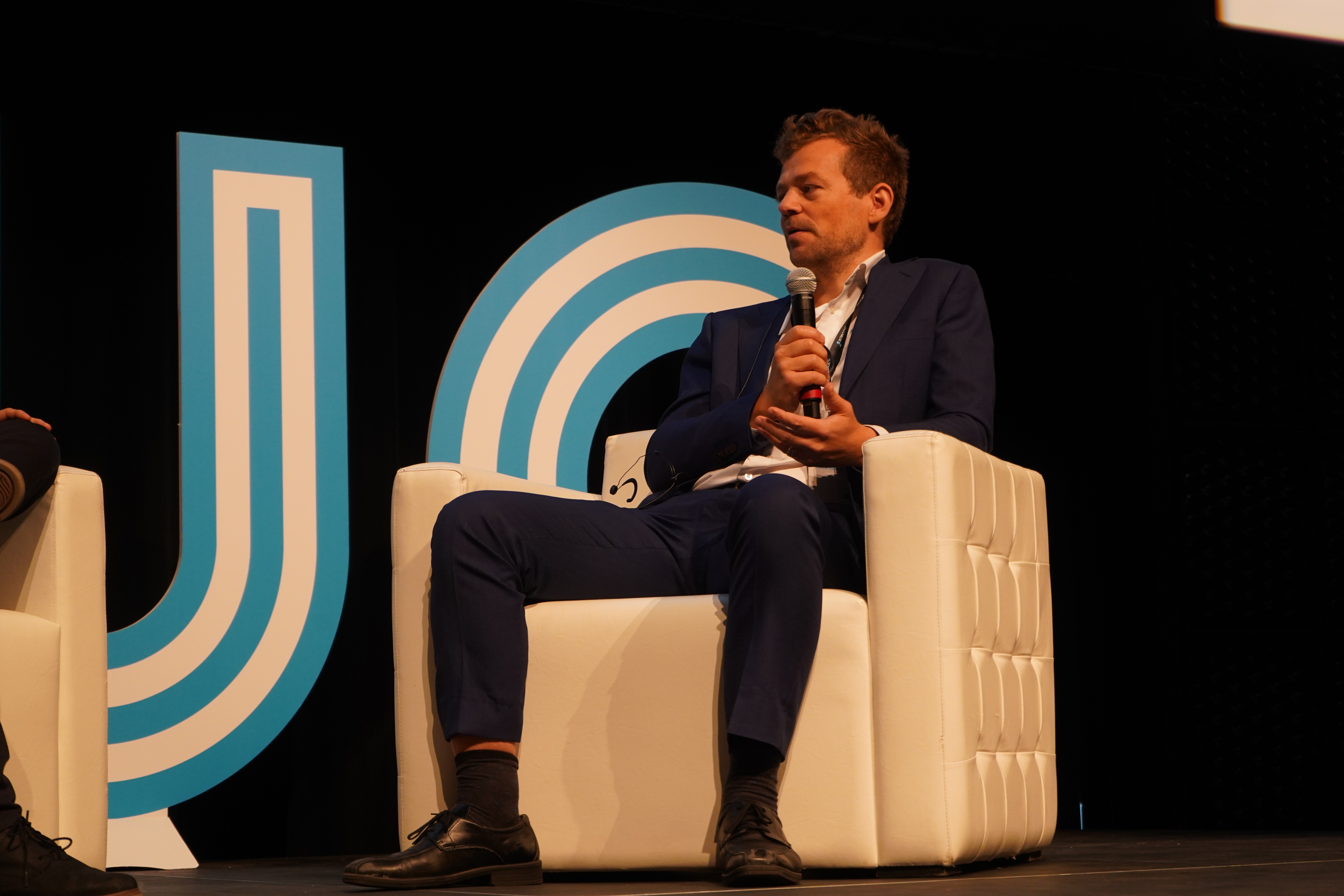
UR's success: From a "toy" to an industry-changer
Samuel asked Esben about his recent recognition winning the Engelberger award. It's the biggest recognition from the robotics industry which marks people who have made a significant contribution to robotics.
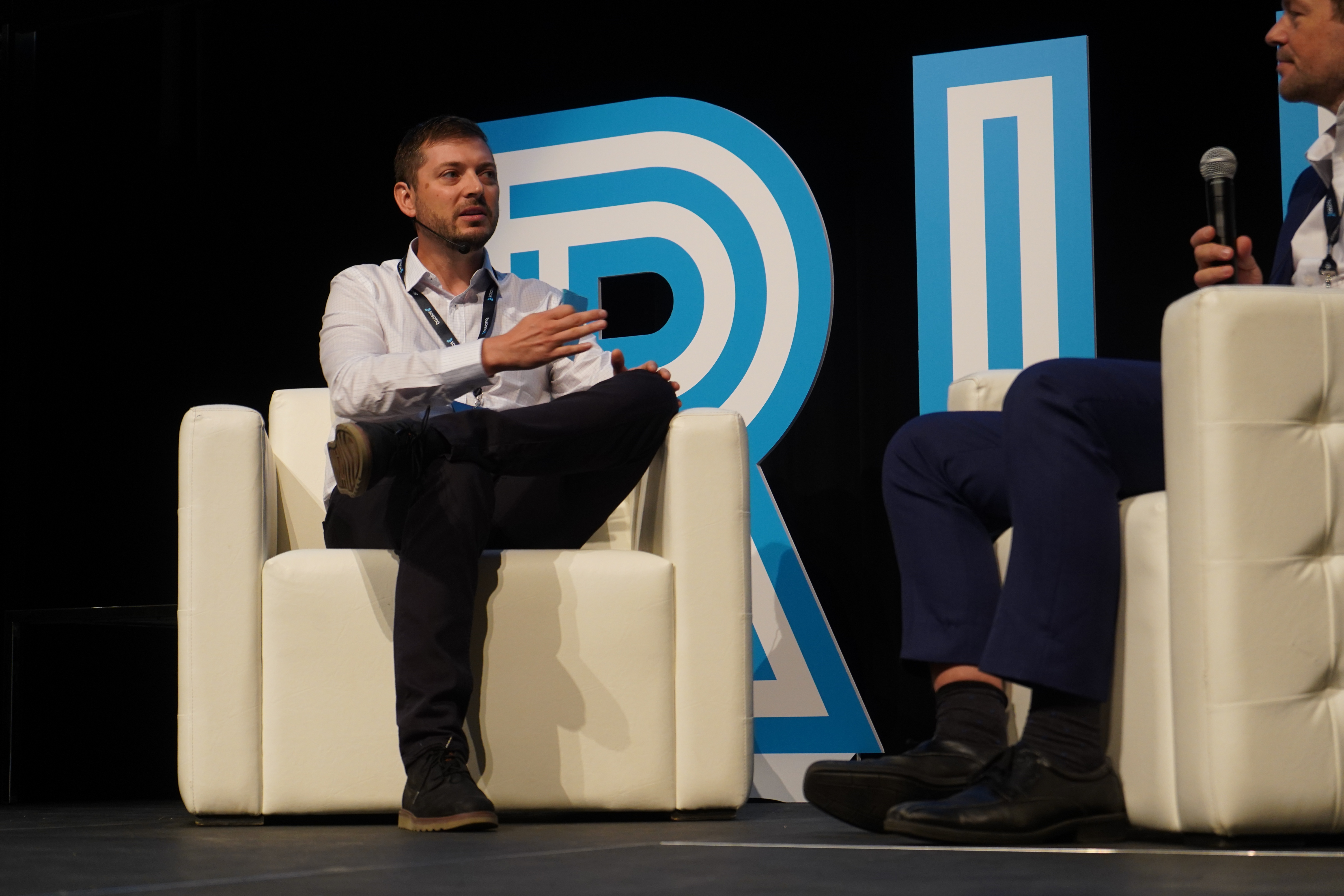
How did it feel to be recognised in that way? Samuel asked.
Esben remembered that the industry hadn't always been so appreciative. At first, they didn't take the URs seriously. He said:
"[When UR started] everybody thought it was a toy. It was a pretty covered market, there was no room for new players. Fortunately we got some investors involved. It has been a crazy journey and many [people] in this room have been part of some of it."
Esben is not just trying to make a business. He is trying to to make a huge global impact with his robots. But he recognises that their success was never a certainty. He told us:
"When we started UR we were super-ambitious. We really wanted to change the world. We believed in it. Of course, not everybody who starts ambitious succeeds. We all hope to hit the home run but most don't. We swung the bat and hit pretty straight and the ball is flying still. I think we had to believe in that when we started."
Teaching the next wave of robotics professionals
Samuel and Esben also discussed the skills gap, which Jeff Burnstein brought up in his keynote this morning. UR is addressing the problem by providing both training (via the UR Academy) and easy-to-use technology.
Esben explained:
"The UR Academy lifts people up. It increases robot literacy. And the [people who do the jobs already] are those we want to become robot programmers because they know their tasks, they know their materials, they know their processes. They are the ones that should be telling the robots how to do things. It's not losing jobs, it's upskilling.
By making the academy we're lifting people up to become more robot literate. By using UR+ we're taking technology down to make it more accessible."
Could UR+ be the Microsoft Windows of collaborative robots?
Samuel wondered if the UR+ system might end up as a standard for cobot software. Esben wasn't sure if it will reach that, but he was very ambitious about UR+'s place in the future of cobots. He sees it as a way to open up cobots to almost any application.
He said:
"We do believe there is a lot of potential in it. We really want it to grow. There's no way that UR as a company can tap into all the potential for automation and all the applications and all the industries. We need the UR+ ecosystem to tap into that. We need smart, small, high-tec companies to deliver technology into this platform to fuel the acceleration and adoption of automation in the world. We want to just provide the platform to make that happen."
Are collaborative robots too safe?
As a contributor to the ISO/TS 15066 standard, Esben was democratic about its role in the world of cobots. He feels that the safety ratings are too strict, but also that they may be necessary.
Currently, Esben feels, the standard takes a very conservative approach to acceptable forces that a cobot can inflict. He said that the safety limits are "ridiculously safe" because they are based on pain limits, rather than injury limits — you can't test for injury because you're not allowed to actually injure someone in a test.
However, he conceded that this extreme level of safety was probably necessary to gain acceptance of cobots. He used the analogy of the first motor cars:
"When cars were introduced in the streets of London in 1862, government didn't know how to deal with this new, dangerous technology. Sure, people were run over by horse carriages before the cars but, of course, cars could go faster and were more dangerous. So it became the law that you had to walk in front of the car with a red flag.
That journey of car technology is still going on. 150 years later every car produced is safer than the previous model but still it kills people every day all over the world. I think it's a similar thing that we're going to go through with robots, that we have to start super-conservative, bordering on the ridiculous. But at the same time we need to accept that to gain acceptance of the technology, we can't have a lot of injury. So I maybe it's the right thing to do."
He concluded that the current levels are probably necessary, but you can currently get hurt more by the door to the workshop than by the cobots within it.
Watch the discussion here


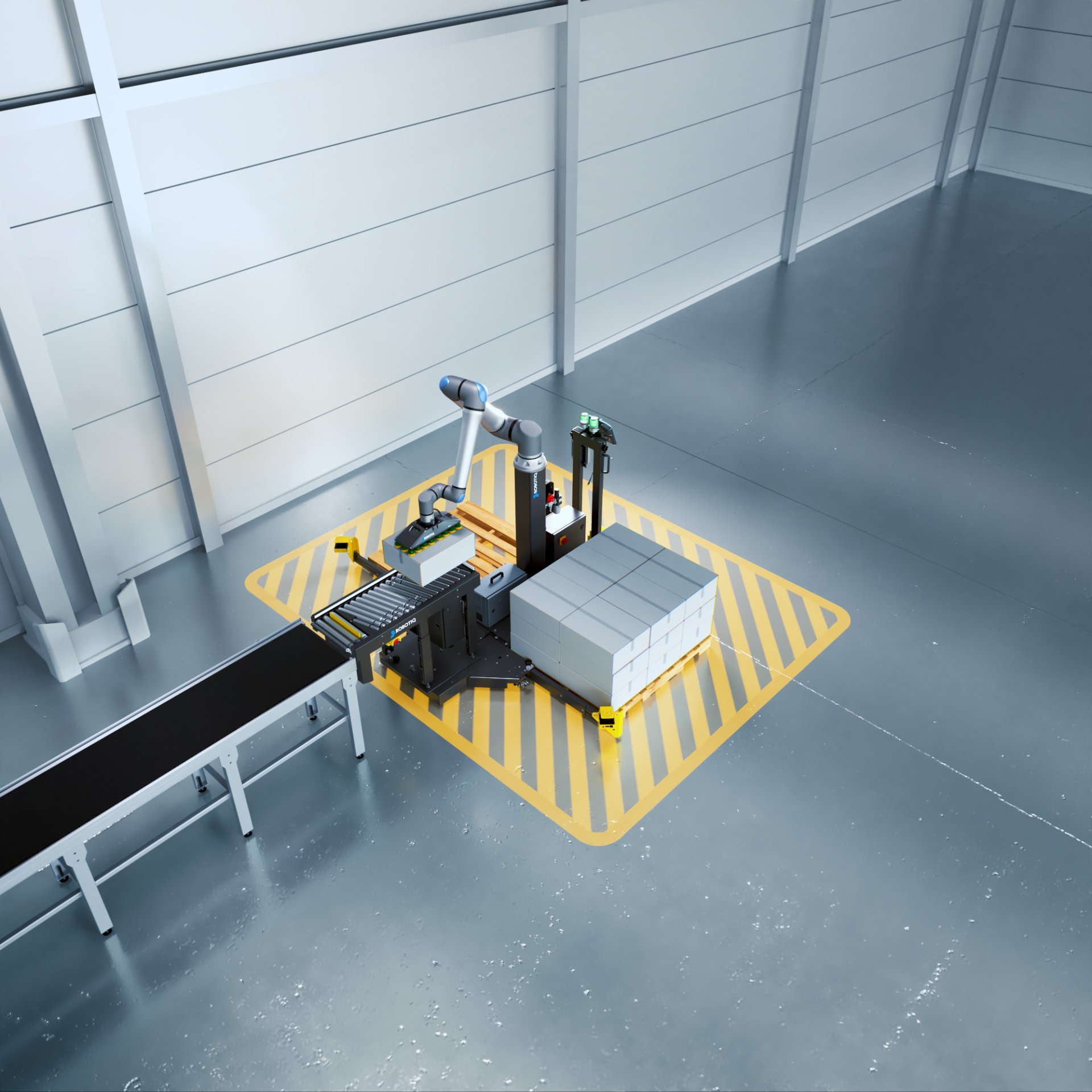

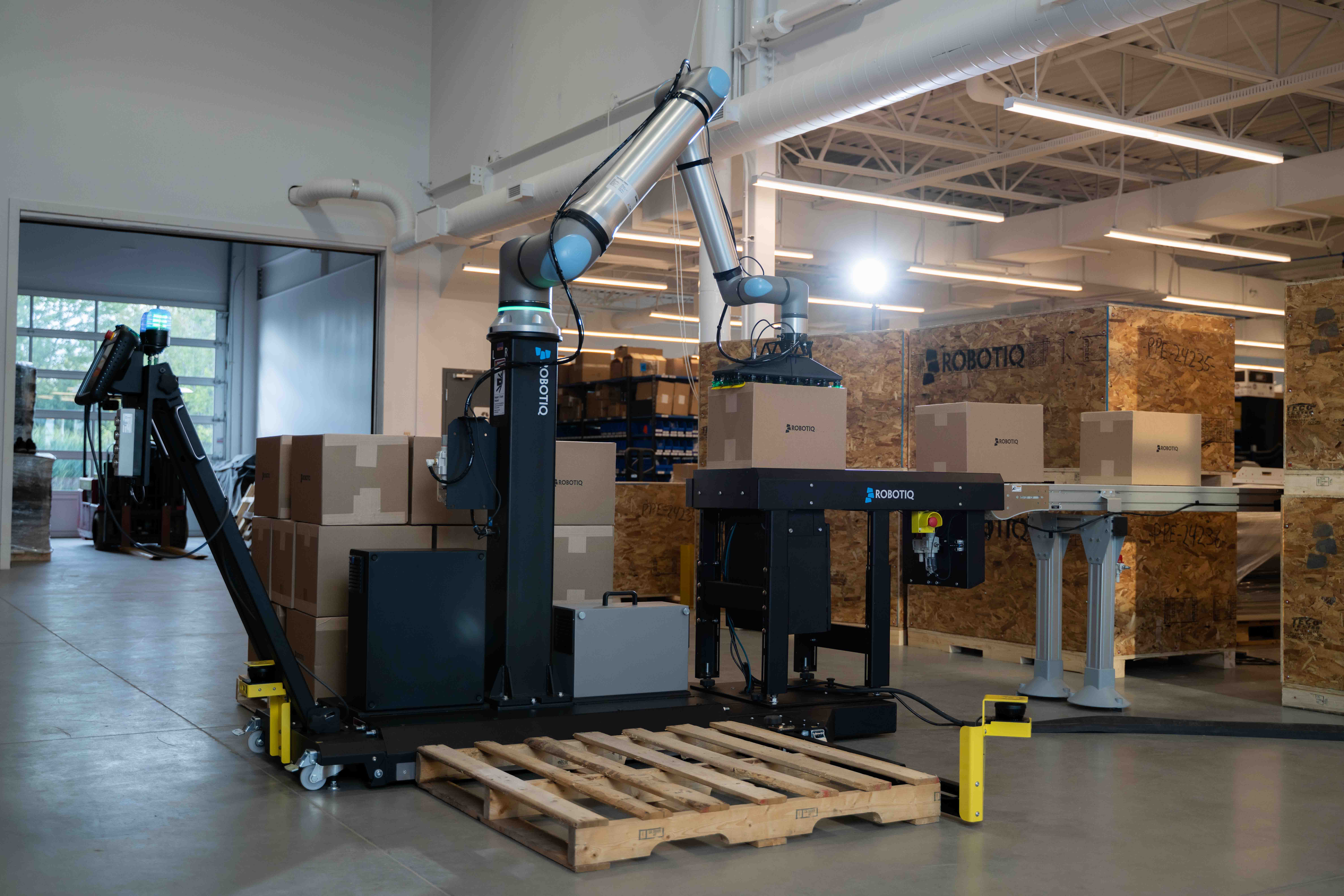
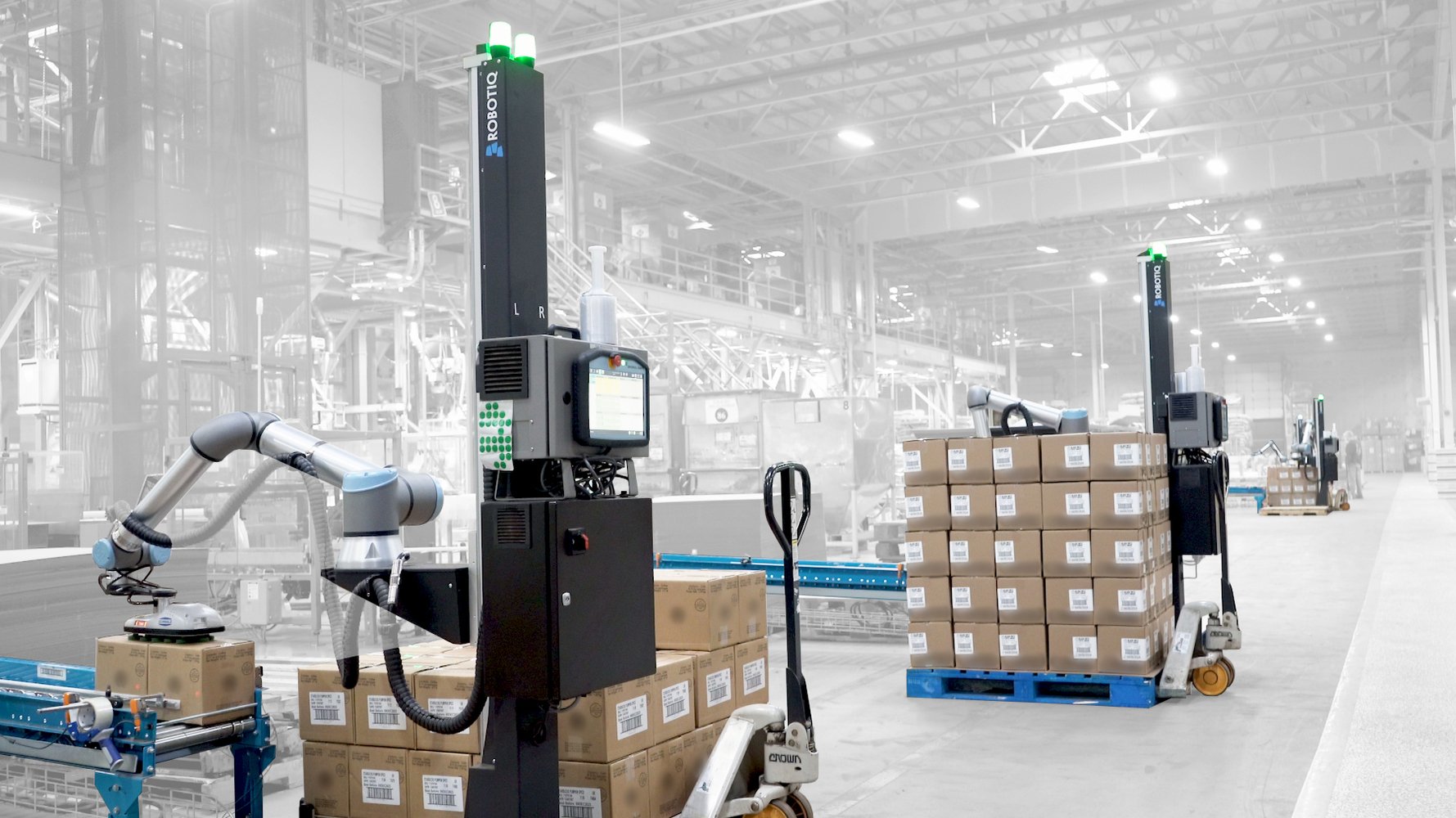
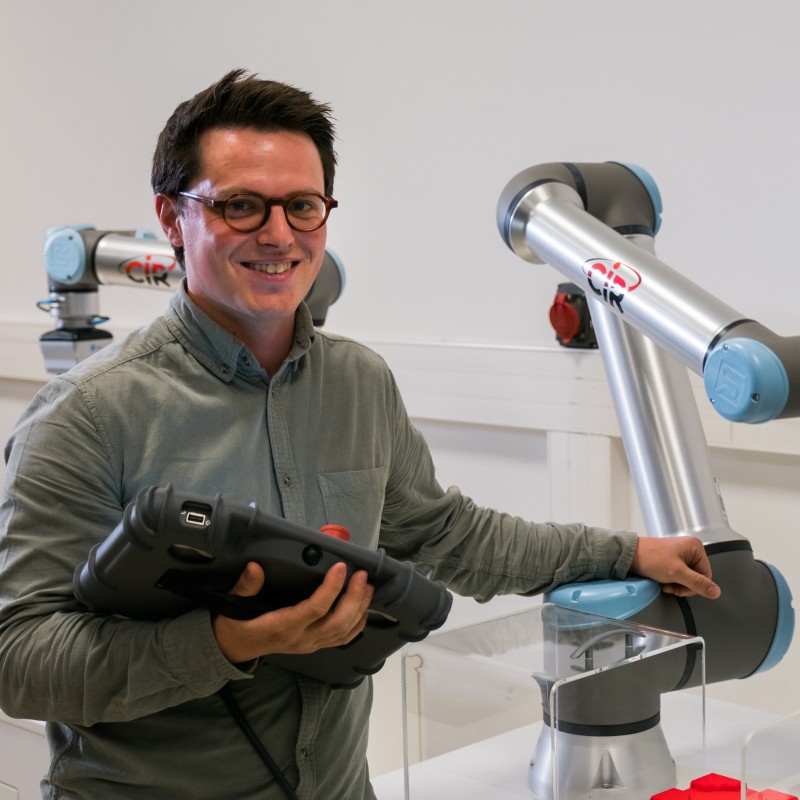
Leave a comment